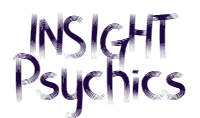Vibroacoustic Therapy’s Powerful Benefits
Besides being a mouthful, Vibroacoustic sound therapy is a fantastic way to help your body’s energy centers align, creating harmony and healing. This relaxation therapy technique involves using a sound bed of some variety to deliver low-frequency sound vibrations through speakers or transducers that spread across the bed and positively impact your entire body. These vibrations are synchronized with music or tones emitted through headphones to immerse you in complete relaxation.
Vibroacoustic therapy promotes mental and physical relaxation, reduces stress, and improves overall well-being. Although results vary from person to person, this therapy modality helps bring harmony to mind, body, and spirit.

Who Benefits from Vibroacoustic Therapy?
Vibroacoustic therapy benefits most people as a natural energy booster and pain reducer. It can be used independently or in conjunction with medical, psychotherapy, and alternative treatments. This therapeutic modality’s most significant benefit is that it poses minimal risk for anyone using it.
The vibrational sound triggers physiological responses, including an increase in serotonin (which stabilizes mood, promotes sleep, aids wound healing, and supports bone health), endorphins (which relieve pain and stress, reduce inflammation, and boost the immune response), and increased circulation, among others. However, there are some contraindications.
Contraindications
What conditions should prompt you to exercise caution when using vibroacoustic therapy?
Here are a few guidelines for conditions that warrant caution when using vibroacoustic therapy. If you have questions about this modality, talk to your physician.
- Acute Inflammatory Conditions. Vibroacoustic therapy can negatively impact healing during the acute or initial phase of inflammation.
- Pacemaker or electronic implants. Although the vibrations are fine, implanted electronic devices can have issues with the magnetic fields that occur during use.
- Psychosis. Although not entirely contraindicated, I recommend seeking physician guidance and being mindful of your self-awareness. At times, the vibrations may seem invasive to persons experiencing Vibroacoustic therapy and can be interpreted as a form of internal invasion in a psychotic state of mind. My goal is to provide relaxation and healing, not aggravate your system!
- Pregnancy. The impact on the fetus or mother has not been thoroughly researched, and a fully immersive vibroacoustic therapy session should not be used. Alternative treatments involve activating meridians through vibrations to achieve a similar calming effect, while avoiding the pelvic region.
- Acute Physical Conditions. This is another area that your physician would greatly support as an adjunct therapy. Before starting treatment, discuss with your doctor if there is any reason it would harm your recovery.
- Hypertonia. Individuals with low blood pressure are advised against using Vibroacoustic therapy, as it can cause a drop in blood pressure due to the relaxed state and vibrations. Again, talk to your physician if you would like to try this!
A few other conditions where you should seek physician input are persons with clotting disorders, recent unhealed medical procedures, epilepsy or seizure disorders, and hemorrhage or active bleeding.

What Does It Treat?
Now, let’s discuss what Vibroacoustic therapy treats. We have already mentioned its benefits in reducing pain, but it also has numerous additional benefits related to specific conditions.
Some conditions or disorders that benefit from this form of therapy are
- Muscle tension from stress/anxiety.
- Hypertension (high blood pressure).
- Sleep disorders. Improves your sleep quality over time.
- Parkinson’s
- Fibromyalgia
- Autism spectrum disorder
- Attention-deficit or hyperactivity disorder
- Posttraumatic stress disorder
The FDA has approved vibroacoustic therapy for improving circulation, relieving pain, and enhancing mobility. However, research shows beneficial outcomes for dementia and Alzheimer’s patients. As research and explorations into sound therapy continue, many more conditions will be added, so be sure to talk to your physician about the benefit of vibroacoustic therapy.
How Often Should You Schedule
You may find this surprising, but research shows that the minimal number of sessions needed for benefit is once a week for 8 weeks. If you have a more chronic condition, it could take 2-3 sessions per week for that same amount of time. This is guidance, not a requirement, but to see the maximum benefit, I suggest 8 weeks of treatment.

What to Expect When You Get There
As a sound therapy practitioner, I will briefly discuss the session’s expectations with you upon your arrival. This is a great time to let me know if you have any restrictions or concerns.
When your journey begins, focus on breathing and relaxing your body. Melt into the vibrations and visualize the healing energy working through you as you release what does not serve you (e.g., stress, anxiety, pain, etc.).
Vibroacoustic therapy offers numerous benefits for various conditions. Whether you regularly see a physician or manage your health independently, this therapeutic modality can help you take control of your life!
If you are in Huntsville, AL, and are interested in experiencing vibroacoustic therapy, you can schedule an appointment with me here.







